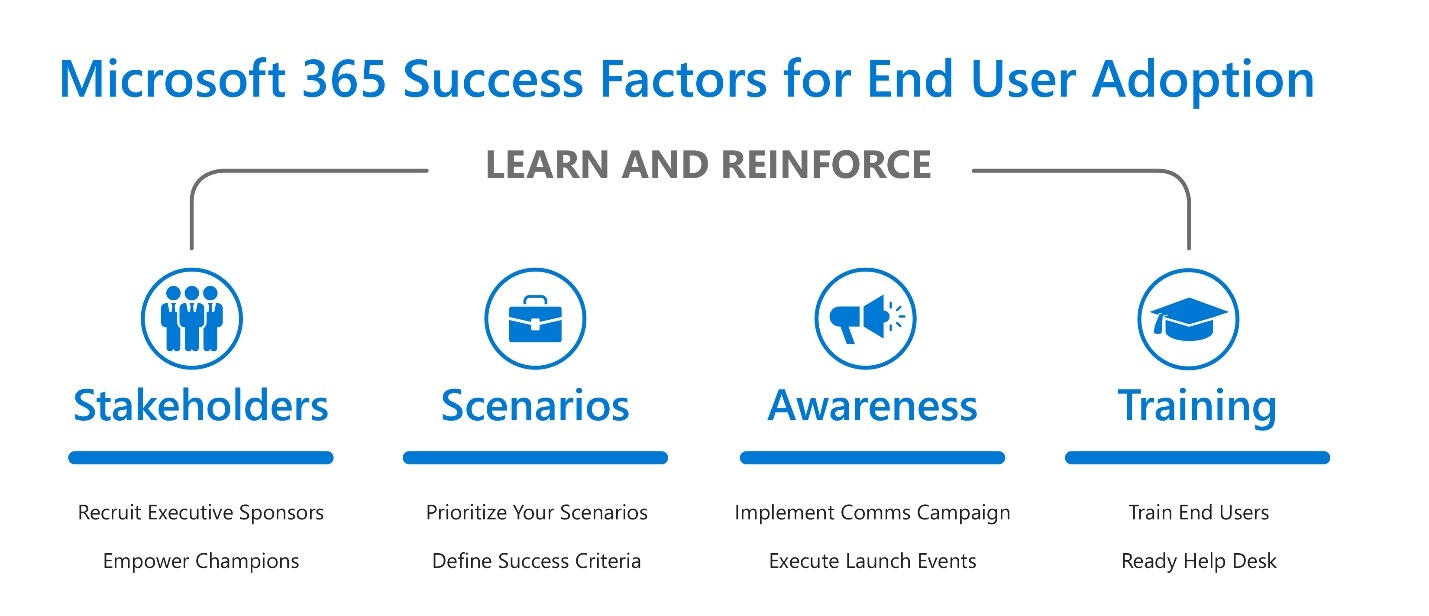This blog series is written by Cyril Belikoff, Senior Director of Office Marketing
Welcome to our blog series about the four success factors for driving Microsoft 365 adoption. In this series I will share insights from our most successful customers, Microsoft and 3rd party research, and proven best practices, about how to be successful with Microsoft 365.
There’s little question we have entered a digital first world. One where organizations have an opportunity to embark on a digital transformation to optimize operations, transform products, engage customers, and empower employees.
In this era of digital transformation, IT professionals have an opportunity to help lead their organizations through one of the biggest changes of our time. If embraced, IT professionals are in a unique position to use their knowledge and expertise gained from implementing multiple technology solutions to now help drive the digital strategy of their organization.
While it’s true implementing technology is not new territory for IT professionals, what has changed is the increased pressure to ensure these technology projects are successful, delivering on the outcomes their business stakeholders care about most.
It is the move to the cloud that is freeing up IT professional’s capacity to be able to take on more of this business enablement role. Now IT professionals can focus on delivering business impact and helping their organization take advantage of the digital transformation opportunity, rather than being consumed by the management of on-premise servers.
You will encounter resistance on this journey, it’s only natural for people to be hesitant about change. The CIO Executive Board has found in their research that only 34% of end users are willing to use new technology that has been rolled out by their organization. People will often resist technology driven change out of fear of the unknown or not understanding why the change is being made and how it will help them.
Microsoft 365 can help employees in your organization do their best work. But, to realize this impact for your organization it’s important to go beyond the technical onboarding and help your end users adopt Microsoft 365. The question I often get from IT is ‘How?’.
From the 40,000+ customers we’ve helped move to the Microsoft cloud with our customer success service FastTrack, we’ve learned this resistance can be overcome with a focus on four success factors: Stakeholders, Scenarios, Awareness, and Training.
These factors may look familiar or seem straightforward. They are. If you’re familiar with any change management theory, there should be no surprises here. Where we have seen some customers not fully realize their goals is when they do not properly invest in these areas or they decide to skip one or more of the success factors.
By investing in all four areas you will help your end users adopt Microsoft 365 and your organization realize the value of Microsoft 365:
- Stakeholders: Gain the buy-in and involvement of business stakeholders who can effect change in your organization
- Scenarios: Identify and prioritize scenarios for using Microsoft 365 that help achieve the goals of your business stakeholders
- Awareness: Excite your end users about Microsoft 365
- Training: Help your end users get the most out of Microsoft 365
I’ll be going into depth on each of these success factors in this blog series. First up will be Stakeholders, outlining the importance of executive sponsors and champions, and their role in the change.
In the meantime, check out our Microsoft 365 End User Adoption Guide to get started in building your plan for success, and Part 2 , Part 3 and Part 4 in this adoption blog series.
 Microsoft
Microsoft